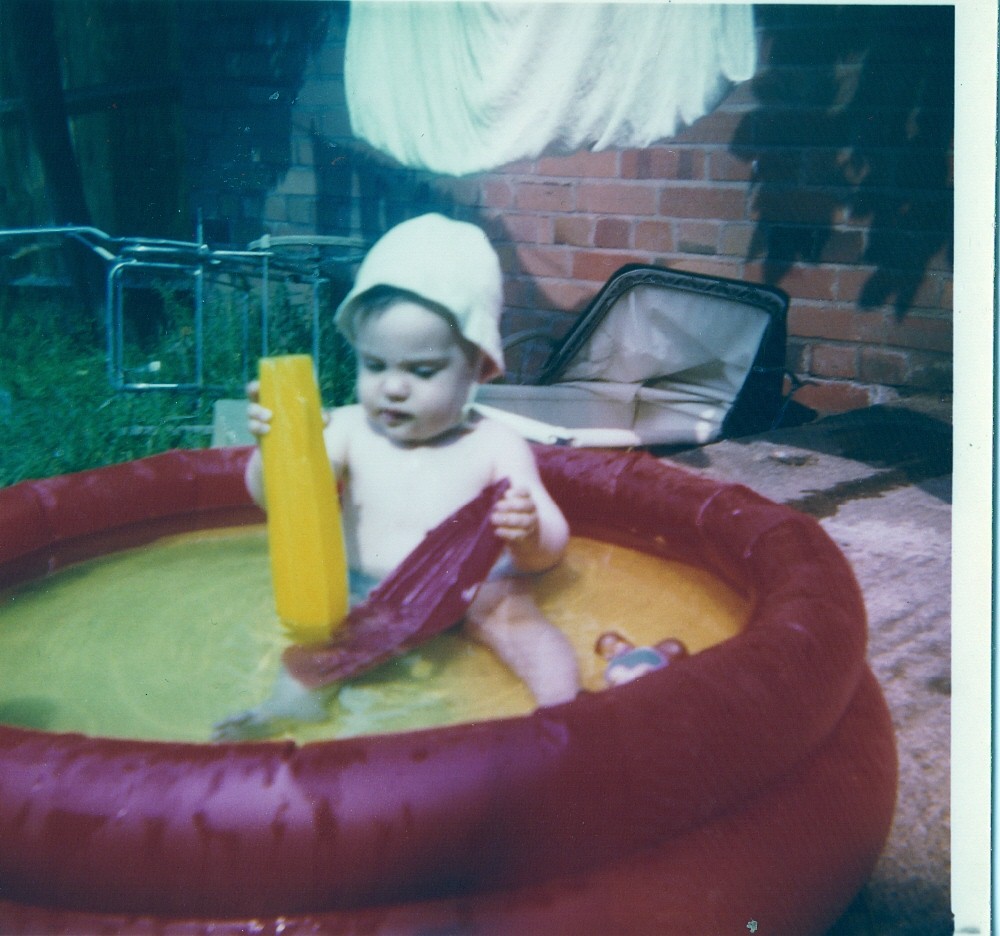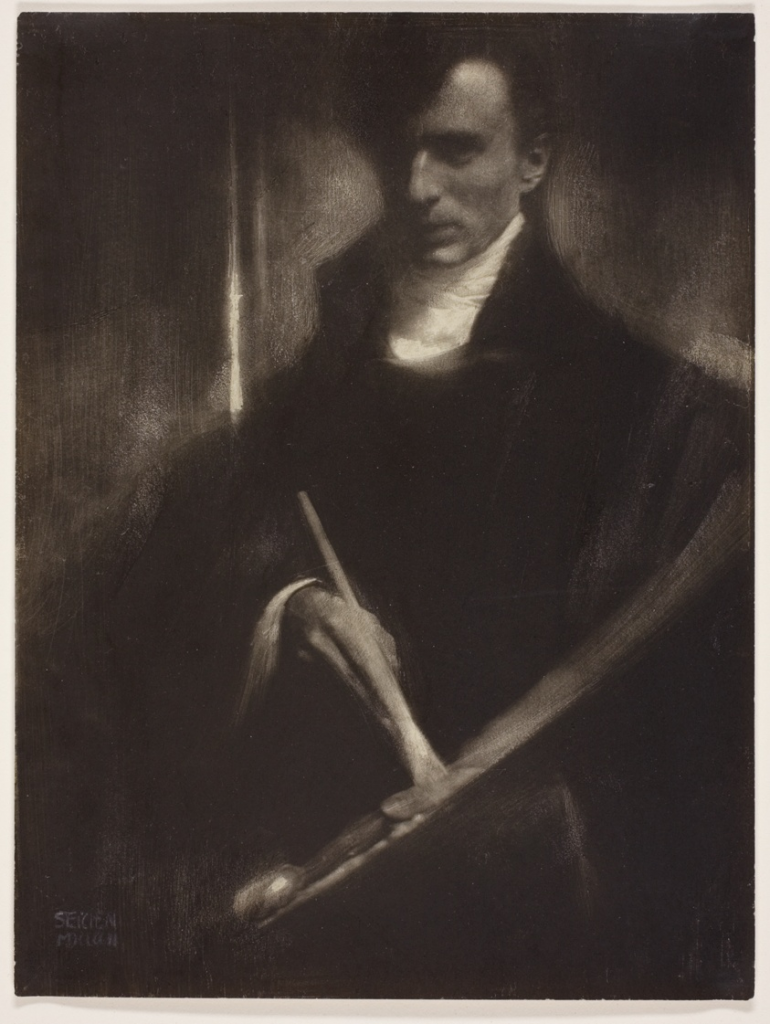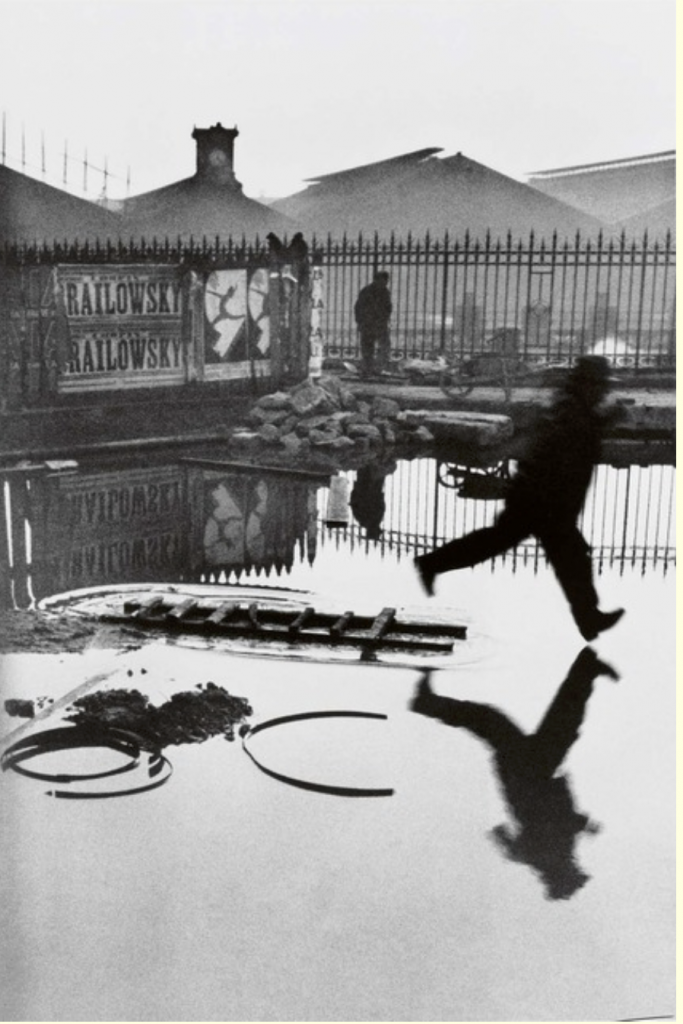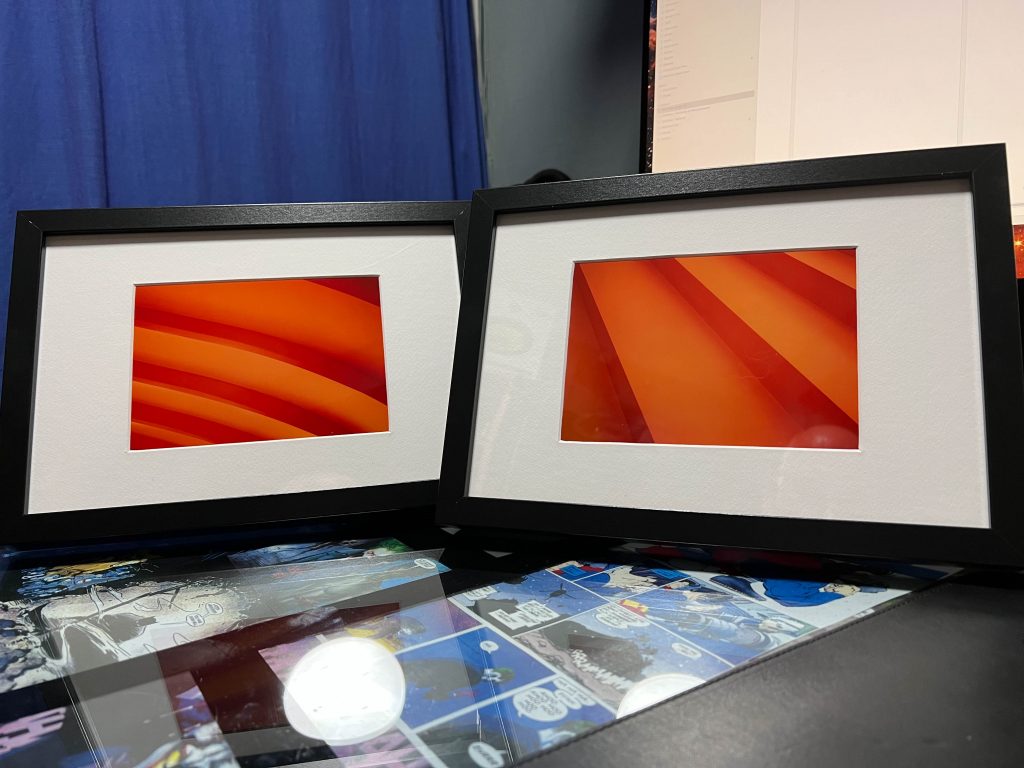MATERIALITY & REFERENCING
Before we get on with the seminar we need to double check that all of us are aware of what should be included in the sketchbooks as we go through the year.
- Brief
- Friday Seminar Notes and Reflections
- Tuesday Tutorials and Reviews – Conversations, Advice, Feedback, Action Planning, Testing.
- Independent Research – Artists, Methods, Meanings
- Practical Work – Plans, Test Shoots, Enlargements, Contact Sheets etc
- Gallery Visit Information – Reviews and Notes
- Development of Exhibition Review Make sure to include the draft copies.
Now onto the main course.
PART 1 : Materiality
Four Questions:
Q: What is photography made of?
A: Light, Photo Sensitive Material, Time Chemistry, Galleries, Opinions, Stories, Ideas
Q: Do materials used add or change the way we understand the image
A: Materials used say a lot about the image if it’s printed on a bra it could be about women’s rights, equality, breast feeding. If it’s printed on a bus ticket it could be about travel, vagrancy etc.
Q: What value do we assign to the materials used in photography?
A: Value of the surface is important, if it’s glossy , matt, tinted, flat, textured etc. Formalist photographers would say it should be on paper, but pictorialists wouldn’t say that.
Q: How much time do you spend thinking about how you present photographs & On which surface etc..
A: Not much time spent on the thought of this, mostly kept on computers. Only since starting this course have I thought of printing some images out. I usually display on the TV as a slideshow if people are around at our house. I have one picture from New York in 2019 of the Manhattan Skyline that I had made up on a large acrylic image.
Beginnings of Image Making.
Alice showed us a photo of a cave painting showing hands outlined on the rock, it was “Panel Of Hands, El Castillo Cave, Cantabria, Spain“ Quotes from Transformational Image Making: Handmade Photography Since 1960
It was discussed that humans have wanted to leave a sign of their existence since the dawn of time, and this is no different really from photography and art today.
Memory
Photography is used sometimes to make a memory. I myself use it to look back on and see how I did some work on the car, or diy job. I use my Lightroom catalogue to look back and see when we had a holiday here, or when I laid the patio in the garden. It’s a more factual record of what has actually passed, rather than a memory in my brain that can become dulled, corrupted, forgotten or even mis-remembered.

Sharing Information
It is used also to capture a likeness of something or someone and this was a big part of the spread of information around the world. Imagine being able to see pictures of the Victoria Falls from your house in Glasgow, where people would have to travel or make do with painters’ representations of them. It’s a factual document that can’t be altered or tampered with, except that we know we can alter them. It wasn’t long before photos were being altered to provide false representations. Cameras and the Process were seen as Mechanical and unalterable, clinical, chemistry based, and a superior recording mechanism.
But, IMPORTANTLY, Photography was not seen as an artistic device or process.
Mechanics
Mechanical Objectivity was mentioned too and how the users of photography overcame some of its limitations. One mentioned was colour. The photos of the time were all monochromatic so after the print was created, they might often be coloured using tints, to make them look more true to life. This was not considered as altering the image or editing the photograph until much later when questions about digital photo editing were abound. Only then did people realise that this had been happening since the early days, and the sheer fact that they’d been altered could have lent itself to being altered for artistic gain or to show a false truth. Fake news!!
Photography Is Art?
Alice asked us the question “Photography Is Art, Isn’t It?” and asked us to explain what we thought could be the challenges of describing photography as art. I thought that art is idealised and hand crafted where photography is more factual and mechanical.
Alice shared an image named “The Manger” by Gertrude Käsebier which was arranged, composed and shot to be a piece of art and look similar to paintings of the past, depicting Mary and the baby Jesus in the stable as per the Christmas story in the bible. It’s an interesting image for the symbolism and I’d imagine it caused some outcry from painters and artists alike when it was created, mainly due to the fact that the photograph was mainly used for documenting what was real.

“Käsebier was a founding member of the Photo-Secession, a group of photographers dedicated to promoting Pictorialism and the expressive capabilities of the photographic image” according to the National Museum Of Women In The Arts. (https://nmwa.org/art/collection/manger/)
We were then shown a “Self Portrait With Brush & Palette”1902, Edward Steichen which showed a photograph of the photographer posing with the old fashioned tools of a painter in what I like to think was a swipe at the Purists who wouldn’t consider photography as art.

Battle Of The Purists and Pictorialists
There were two groups of Photographers, Purists, who felt that photographs were factual, Accurately Depict the subject, Unaltered and shot in the camera, replicated the human eye, produces reality, and is a technical process.
The other group were the Pictorialists of which Käsebier and Steichen were members who thought photography could be used for allegorical and symbolic purposes, manipulation of the subject or the photo to convey a meaning to the viewer. Emotional impact to the viewer was considered more important that the image itself.
We then examined two photos to decide whether we thought them to be Purist or Pictorialist photographers.
Edward Weston “Shells” 1927 was shown on screen and Alice asked what our opinion of it was.

Some of the group thought that it was a Pictorialist image but I thought that it was a Purist image as it is a representation of a shell with no arty touches. It is a basic document of an item.
Henri Cartier-Bresson

Again it was confusing for some as it was considered as both Purist and Pictorial but it was a purist image again, a photo of what happened in that place at that time and nothing more. There is no part of the photograph that has been set up, edited, touched up or done for artistic purposes.
The book Transformational Image making: Handmade Photography Since 1960 states that once Photography as Art was recognised as having the ability to interpret and tell stories as painting had done before it, it was then free to evolve as an art form and emerge.
Pictorialists Parade
Alice showed us a group of other photographers, some were recently displayed in an Exhibition at the V&A:
Hannah Hoch – who was well known for her Photomontages (collage) to comment on the social times in the 1930s. She used images from different sources and joined them in ways that changed the original meaning of the images.
John Heartfield – Was quoted as saying “Use photography as a weapon” and work using his photomontages in Berlin during the war to make political statements. He was a member of the DaDa movement like Hoch.
Burroughs and Gysin – The Cut-Up Technique was also photo montage and the images were a mix of images and text from other sources that could be interpreted in any number of manner when it was out on display.
Duane Michals – Nora Barnacle was a piece consisting of a tintype print which he then applied oil paint s to. He was a proof that Pictorialists didn’t stick to the rules and if he saw a rule he’d often go out to break it.
Betty Hahn – Printed images onto fabric or alternative processes like retro- Daguerreotype and then embroidered stitches into some and making others into embroidered art pieces. Road and Rainbow 1971 is one of her famous pieces of work with a road scene and the rainbow and road markings, along with the farm roof being stitched into the paper.
Barbara Kasten – Kasten did photograms and cyanotypes and is quoted as saying “I wasn’t breaking rules; I was actually making up my own”
Bea Nettles – Who did more surrealist and dreamlike work on gum bichromate, and reintroduced tinting into her work. She was interviewed in the Lens Culture magazine about how she was restricted by the cost of materials when starting education and work.
Question Time
Then we had a question and some thinking prompts to reflect on after the session had finished.
What does this mean for Photography today?
• Rise of the digital image!
With digital cameras growing in popularity and the cheap nature of the per shot cost it’s no wonder that digital images are growing in number.
“new research from Fujifilm 18-24-year-olds are Britain’s biggest photo hoarders, on average hoarding between 3,000 and 5,000 images each in their smartphone camera rolls, totalling a national average of around 10 billion photos.” (https://www.amateurphotographer.co.uk/latest/photo-news/survey-reveals-10-billion-images-stored-on-uk-smartphones-159763)
• Do we still print photographs anymore?
Photos are printed in a relatively few cases, some people like to share images with others and might print a load off their phone in Boots machines or even send away for some prints to be returned. MY daughter and many of her age group (early twenties) have an Instax camera which is an Instant Camera (Like Polaroid) that creates a one off image which can be gifted or stuck on a pin board etc. In recent years I’ve printed off very few images, mostly due to lack of a decent home printer that doesn’t block up when not regularly used. Recently I had some printed in a machine and the results were outstanding, so much so that I actually framed four of them and will look to sell them in the future.

But on the whole, when everyone had a biscuit tin full of old photos, this is no longer the case. They’re all on phones these days. Most of the time I have to actually persuade my family that I should back up their images when they are about out of space on their devices.
• Mass production
The fact that digital photographs can be sent on email or file transfer program means that they can be at a printer anywhere in the world with the right colour profile and be printed as many times as possible. It’s also true to say that mass production of images means that everyone has now seen many images of the Eiffel Tower, Big Ben, Las Vegas sign, Hawaiian beach etc. these are shared on web platforms so their reach is onto every screen possibly.
• The cloud and storing ‘unlimited numbers of photographs’ – does this affect our ability to be selective and edit? Have we lost the decisive moment? Are photographs as precious?
I’m not sure that it alters the ability to select photos, tools are available to allow you to view images together and then flag images to be used later. It’s an easier process than thumbing through hundreds of paper based photos. That we can take many more images means we have a greater chance of catching the “Decisive moment” on one of fifty photos, when we had to be lucky to get the exact shot on film. There is no real squeeze on data capacity so you may as well keep them all, I delete the blurred and really poor images but keep most of the images I capture on digital. I think I’m less likely to dispose of images that I have on strips of negatives as It means cutting the strips up. Space taken up by negatives in folders is significant when compared to the size of digital libraries. As of 2018 I had over 133,000 images in my catalogue as can be read in this post. AI will need to revisit the post and do an up to date write up as I now have 148,000 images and videos in my lightroom catalogue.
• Has the value of the photograph changed? Think about the material value we discussed earlier?
I don’t think the value of a photograph has changed that much, if it is on a computer hard disk or in a negative format it still requires relevant hardware to read and produce a print. If it is about the value of a print, then that is surely the same value as it was previously too. If anything the value of Printed Photographs is increased today as people can select just the photos they want to print, where in the past they’d usually print out all 36 and then throw the rubbish ones away, or keep them in case.
• Craft / labour of photography
Craft and Labour of photography is different, that much is true. But it’s not necessarily any less difficult to produce an artistic piece using photography than it once was. A person can just choose to print an image from their phone and has multiple options including home printers, shops, photo printing labs etc. `these are the easy life photographers. The next level is people who use technology to store, catalogue, edit, publish and sometimes print their images. Skills to use some software are often too much for many people to be able to do competently and puts off a good number of people from managing their post production processes.
At the top end, you still have artisans who use the finest materials and spend serious lengths of time in producing an image, whether it’s by digital alteration and then printing on a specially calibrated printer etc.
Materiality
Concerns are voiced regularly into the materiality of photography now that digital is the primary media in use in society. Photographs on a hard disk exists bits (binary digits, either 1 or 0)and as such do not physically exist unless printed. Touching and fondling images is something that we were used to when you had your packs of holiday snaps back from Truprint and it’s thought that this is generally being lost as they exist more on screens. Whilst the touch sense is not exactly the same we still swipe the screen as though changing pages in a book and need to use our hands when we want to zoom in or out. I think that this provides a similar experience to that which we were used to, otherwise I don’t think it would be such a popular way of viewing images. Some computer/digital processes have been introduced and with no or tenuous links back to the original analogue it hasn’t taken off.
Alice then introduced us to some more photographers that might be worth researching and perhaps useful for our projects.
Catherine Yass,
Her work “Damage” saw her take her colour transparency film to the location it was shot and leave it subjected to the elements/natural processes and then using the results to show what was happening in that area.
Maurizio Anzeri
Anzeri embroidered images, (mostly found images) so that it covered up parts of the face and left an eye open or other facial features.
A photographer who went to Berlin to photograph an embassy that didn’t belong to any government any longer and was falling apart. His films travelled with him from LA to Berlin and they were impacted by the X Ray machines in the airports so much that they picked up damage in the form of strange light leaks, (X Rays are still light on the spectrum with a shorter wavelength than UV.) They can get through the film canisters and rolls.
Floris Neususs
Camera less Photography either by using photograms or exposing paper to the light with an object, usually a person in the way. Video on V&A website
Makes photographs of water by placing the paper in the water and capturing what is above it, she makes images at night with the paper in the water and a flash of a flashlight to expose for the water.
Adam Fuss
Makes photograms using all manner of subjects, from people to spores to water. Some of them are similar to Derges.
Fuss said in the video that “Photographs with less detail contain more meaning” and “if you’re not creative, you die”
Pierre Cordier
Coined the term Chemigram for making images using chemicals on the paper/surface and then developing in daylight to see what happened.
Garry Fabian Miller
Another camera less photographer who shines light through glass containers onto objects and gathers images on the paper that way.
Marja Pirila who deals a lot with camera obscura and pinhole cameras to gather images in rooms with a scene set up in there. There are some wonderful images of people asleep in bed with the projected image on the wall making it seem like their dreams are all around them.

TASK:
Create a Photogram In The Dark Room
Some brainstormed ideas: Upside down phone on paper, tools for cutting up on the paper, project an image through at the same time, use laser pointer or torch too, what else could I put on the paper?
Print on an alternative surface.
Print on thermal printer, dot matrix, ASCII Art, T-Shirt Transfer, Tattoo?, Transfer onto plate or ceramic, Emulsion transfer like slate that Dea Paradisos made at flaxmill, transfer to tile, transfer to materialIf we can make a connection between the surface and the image that’s even better.
There will be a separate post to deal with these two challenges.
PART 2: Harvard Referencing
Academic Integrity and results of non-compliance as the universities approach is taken very seriously, the damage is done to the person, dept, university and even the whole community.
We were shown how to use the Turn It In Tool as a mock portal has been set up for us to use.
The main crux of referencing is to “Credit the ideas of others within your own work”
At all costs AVOID PLAGIARISM
We were shown the five elements of academic integrity.
Accuracy – ensure you copy quotes or ideas when paraphrased, accurately, errors could invalidate your own work.
Honesty – If other peoples’ ideas are used, ensure you note down all of the usual information about who, what and where..
Fairness – Uphold the values of the course and University by being honest at all times.
Responsible – You are ultimately responsible for your own work, if you need to find some details out, look for them. Reference if required, and don’t forget to note down the location when you take notes.
Respect – Show that you respect other people by acknowledging and recognising their input but you must ensure the overall body of work is your own.
Copyright Disputes
We discussed copyright and using other people’s work without permission landing music artists in courtroom battles. ~Videos on the analysis of Radiohead’s Creep and Lana Del Ray’s Get Free clearly show a lot of similarity.
Others Alice showed us were Robin Thicke/Marvin Gaye, Katy Perry/Marcus Gray, and Queen, Bowie/Vanilla Ice.
It shows that even a small uncredited use of someone else’s ideas can result in a huge reputational impact, and Wolverhampton University do not want their reputation besmirched by someone just copying all of their work off the internet.
Turnitin
We were then introduced to Turnitin and were given a document to intentionally Plagiarise and then upload it to the tool.
My first effort at a bad paraphrase had a similarity score of 86%
When I paraphrased it correctly and included the correct references it came out as 24% and the parts that are similar are obviously quotes, cited in the References and in-text citations.
Bad Effort Word Doc:
Better Effort Word Doc:
Cite For Sore Eyes
A great resource for us to use is www.citethemrightonline.com where we can search for the reference we want to use and then it formats the reference and in text citations. It’s useful as you can search for any situation that might provide you information. I asked about how we would reference an artists talk or even a lecture and a quick search in the list showed up that there is a category.

Comments are closed.